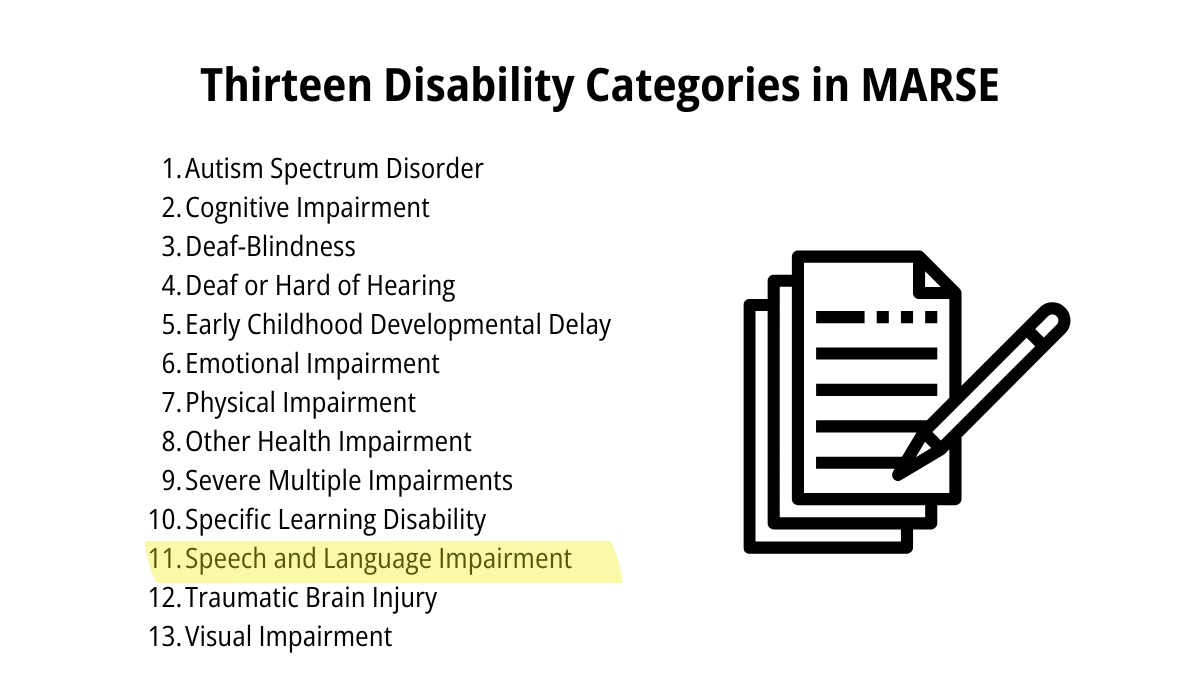Eligibility for Special Education under designation of Speech and Language Impairment
The Michigan Administrative Rules for Special Education (MARSE) define eligibility for special education services within thirteen categories of disability.
- MARSE R340.1710 Speech and Language Impairment


